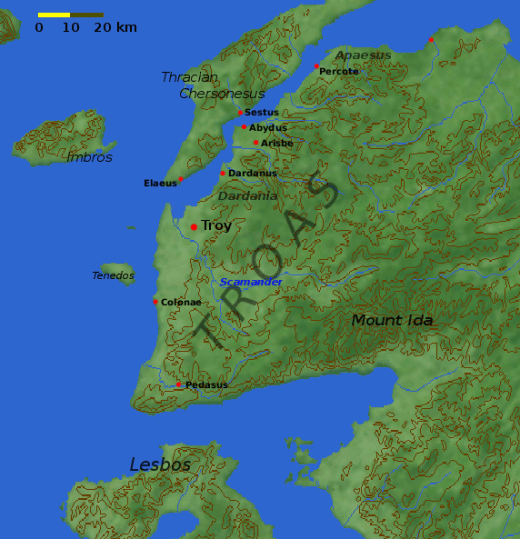The Assos Way is a window into New Testament history.
Lenten Campaign 2025
This content is free of charge, as are all our articles.
Support us with a donation that is tax-deductible and enable us to continue to reach millions of readers.
In the Acts of the Apostles, we read about St. Paul and a companion, Timothy: “So, passing by Mysia, they went down to Troas” (Acts 16:8). And in Paul’s Second Letter to the Corinthians, the Apostle to the Gentiles writes, “When I came to Troas to preach the gospel of Christ, a door was opened for me in the Lord” (2 Cor. 2:12).
Now, according to Bible History Daily, a door is opening to new insights into part of St. Paul’s missionary journeys throughout the 1st-century Mediterranean world.
“Nestled on the Troad Peninsula in western Turkey are the remains of a Roman road that once connected the port cities of Alexandria Troas and Assos, which I have lovingly dubbed ‘the Assos Way,’” writes Meg Ramey, Director of Education Abroad for Tutku Educational Travel. “It’s a road that’s significant not only for its antiquity but also for one of its most famous pedestrians—the apostle Paul.”
Ramey points out that according to Acts 20, as Paul stopped to visit Christians along the coast of Anatolia as he made his way down from Macedonia to Jerusalem. After spending a week in Alexandria Troas, Paul decided to walk to Assos and meet up with his traveling companions, who sailed around the Troad Peninsula. Ramey says we can have a fairly good idea of his route since some of the segments of that old Roman road still exist.
“In fact, one of the better-preserved portions of this Roman road along the Assos Way is only about 4 miles from Assos,” she writes. “There, travelers coming into the city would have caught some of their first glimpses of the Assos acropolis with the Aegean’s sparkling turquoise waters in the distance. If you’re interested in stepping back into Paul’s sandals, make sure to visit this section of the Assos Way.” Her article gives some specific directions:
In order to find it, drive west from Assos along the main road (Ayvacık Gülpinar Yolu) in the direction of Alexandria Troas. While enjoying some lovely views of the Aegean Sea and Lesvos Island, you’ll pass by old fountains, animal feeding troughs, stone fences, and olive groves.
When you see a sign on your right that reads “Kulaf 7 Tamiş 10,” begin watching for a group of old farmhouses about a mile (2 km) from that sign, in the village of Korubasi. You should be able to park by these houses. If you turn back in the direction that you’ve just come and walk a bit to the left on the right side of the road, you’ll soon discover the stone remnants of the ancient Roman road. From Korubasi, you can follow the road back east toward Assos for a mile to the aforementioned sign. The Roman road ends by this sign, which is also another great place to park.
“Those who have the energy, time, and desire to walk into Assos on foot, just as Paul did almost 2,000 years ago, can use the modern road to continue into town,” Ramey says.
She cautions that the entire 31-mile trail from Alexandria Troas is not marked out, but steps are being taken to do so, including by Turkey’s Ministry of Culture and Tourism. After all, the trail lays claim to even more history than the apostle Paul. In antiquity, pilgrims walked this road to visit the Temple of Apollo Smintheus (the Smintheum) located about halfway between Alexandria Troas and Assos. There they worshiped Apollo.
This is also the legendary route that Aeneas used to escape from Troy after the Trojan War. “According to Virgil, Aeneas built his fleet and mustered his men in Antandros, a harbor slightly east of Assos by Mount Ida, and sailed from there to Italy (Aeneid 3.5–6),” Ramey says.









